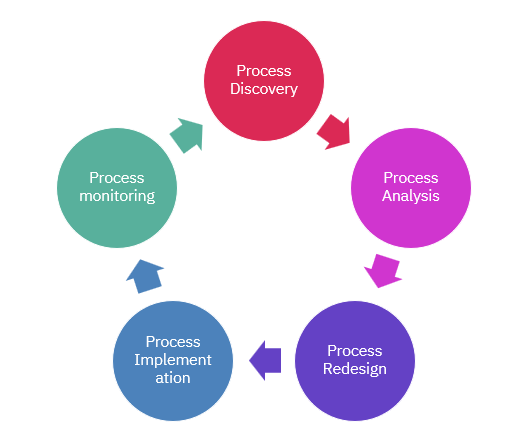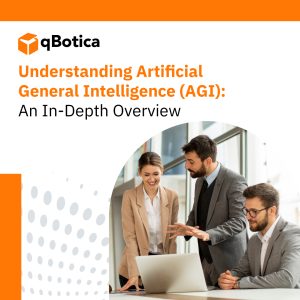In the rapidly evolving landscape of digital transformation, organizations are increasingly relying on continuous discovery tools to navigate the complexities of change. These tools represent a paradigm shift from traditional process discovery, as continuous discovery tools offer a strategic advantage, enabling companies to uncover insights, validate assumptions, and improve process solutions with stakeholders in real time.
This article introduces the basics of the concepts and explores the pivotal role of continuous discovery tools in driving successful transformation engagements, highlighting their impact on process excellence.
Digital Transformation And Process Excellence
Digital Transformation is the integration of digital technologies in all areas of business to modernize legacy processes and applications executing those processes with the latest technologies like cloud, mobile, analytics, etc. The Transformation must begin with understanding the firm’s current operation and performance metrics and that’s exactly where process excellence fits in the picture.
Process excellence emphasizes the efficiency, effectiveness, and productivity of processes by focusing on the continuous improvement of various tasks in the end-to-end process.
Process excellence is key to successful Digital transformation Programs and having a continuous loop of process management will sustain and gain more improvements in process outcomes.
For instance, before implementing a workday solution for automating the HR recruitment process, it is good to perform a process excellence engagement to streamline and improve the underlying recruitment processes.
One of the most efficient methodologies for process excellence is to execute various stages of the Business Process Management (BPM) lifecycle in the chosen process area. Let’s get into the weeds.
BPM Lifecycle Phases

1. Process Discovery
2. Process Analysis
3. Process Redesign
4. Process Implementation
5. Process Monitoring
This phase involves continuously monitoring the performance of implemented processes to ensure they are achieving the desired outcomes and meeting organizational objectives.
The scope of this article is to how the latest continuous discovery tools are helping organizations fast-track the Process discovery, Analysis, and Redesign phases of the BPM lifecycle and we will explore further in the rest of the article. Let’s start with a typical journey map of a BPM project that covers these 3 phases in the next section.
Typical BPM Journey map
When a BPM process excellence team starts with the discovery phase they will:
- Identify the process area that is most troubling by interviewing business leaders.
- Conduct a process walk-through and workshop to identify the process steps from SMEs.
- Conduct interviews to map the end-to-end processes and identify Critical success factors.
- Map the AS-IS process and identify key tasks.
- Observe individual workers or agents in their day-to-day work to capture the KPIs.
- Perform manual process analysis by using traditional techniques like bottleneck, Pareto, lean Six Sigma tools, value mapping exercises,s, etc.
- Improve the steps create a To-Be process and present the findings to the stakeholders.
- Repeat the steps from 1-7 to find additional improvement opportunities.
- Create a business case and manually prioritize the opportunities based on complexity and business value.
- Pick the ones that have a high ROI and faster time to market and create a project.
Now that we understand the status quo let’s learn about continuous discovery.
Continuous Discovery Approach
Continuous Discovery is an integrated approach that is automated by a tool that enables organizations to identify the current state of a business process holistically, and constantly understand how business KPIs are affected when actively applying process re-engineering and automation to achieve your business outcomes.
Various vendors provide one or more tools and for our discussion, we will stick to UiPath Continuous discovery products as they have comprehensive sets of features to explain in detail.

Accelerate BPM phases using UiPath continuous discovery products – Each of the 4 UiPath continuous product suites helps with accelerating the Discovery, analysis, and redesign of the processes.

- Process Discovery – Manual effort is replaced by automated discovery using the GenAI-powered tools like Process, Task, and communication and the baseline data is recorded as idea documents in the Automation hub for future reference.
- Process Analysis – Manual Analysis has been replaced automated approach to finding the process variations, bottlenecks, inefficient checks, resource allocation issues, process conformance, etc. using advanced features provided in process mining or identifying customer sentiment and quality of service and 1 or 2-touch email tasks for automation as well using communication mining.
- Process Redesign – Simulate redesign scenarios using process mining features to identify automation opportunities or use Task mining features to cocreate a To-Be process with the stakeholder before they are implemented and run mock user dry runs. The redesign Ideas are then recorded in the Automation hub for further implementation.
Let’s finally see how these changes have impacted to creation of a discovery journey map compared to the above baseline journey map.
New BPM Journey map
With the continuous discovery tools available, when a BPM process excellence team starts with the discovery phase they will:
- Identify the process area that is most troubling by using Workforce Intelligence in task mining applications.
- Conduct a process mining exercise to identify the AS-IS process steps of the identified scope.
- Conduct a Communication mining exercise as there are multiple communication channels involved in the process steps and use Gen AI capability to fast track the analysis setup.
- Share automation opportunities identified from communication analysis to the Automation hub.
- Analyze the outputs from the mining exercise to map the end-to-end processes and identify problem areas using the Gen AI capabilities and root cause analysis features.
- Use Process mining automation potential simulation capability to pick good candidates for task mining.
- Conduct Task mining exercises on the problem areas to get finer details of the issue.
- Analyze the task mining outputs to finalize the potential automation opportunities.
- Use the Task mining findings to create ideas in Automation Hub.
- Refine the idea identify the ROI of the automation and prioritize the automation projects.
Now that we have covered all the topics let’s move to the conclusion.
Conclusion
As organizations navigate the complexities of digital transformation, continuous discovery tools emerge as indispensable assets in their arsenal.
In this article, we covered how different Continuous discovery tools empower teams to complete the process discovery, analysis, and redesign phases of the BPM lifecycle thereby accelerating the Digital transformation initiatives and improving the success rate of the programs.
As the digital landscape continues to evolve at a rapid pace, organizations that prioritize continuous discovery will be better positioned to stay ahead of the curve, foster a culture of innovation, and achieve sustained success in the ever-changing business environment.
To embark on your Continuous Discovery journey and unlock the full potential of your business, contact qBotica today. Our experts specialize in crafting tailored Continuous discovery solutions that drive tangible results and sustainable growth in your digital transformation or process excellence initiatives.

Arunkumar Asokan
Delivery Director, AI and Automation




